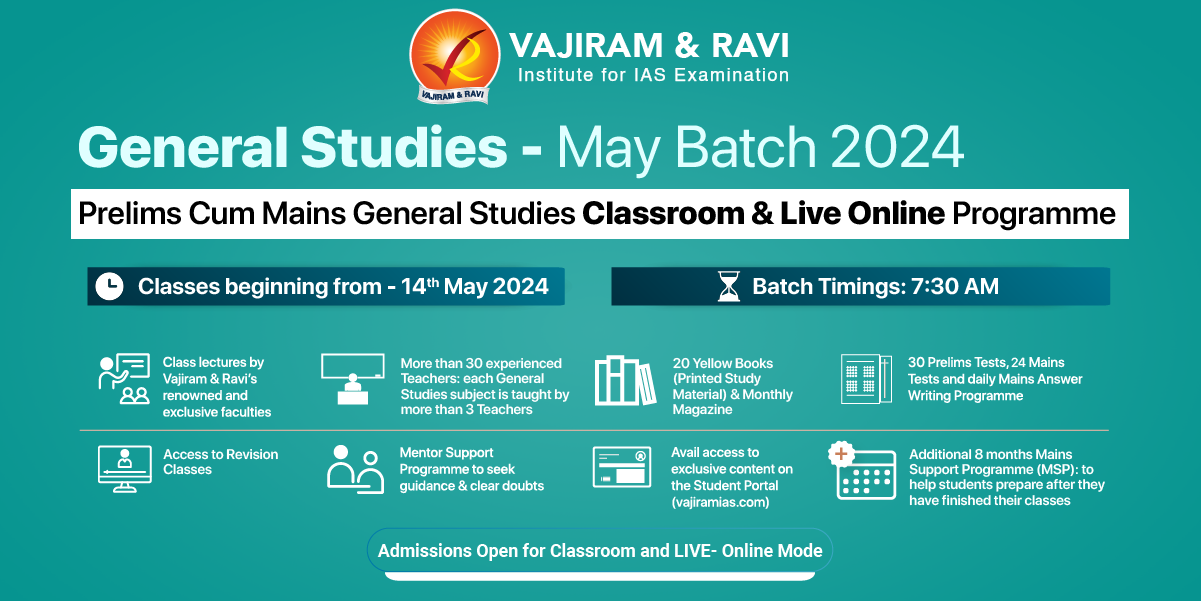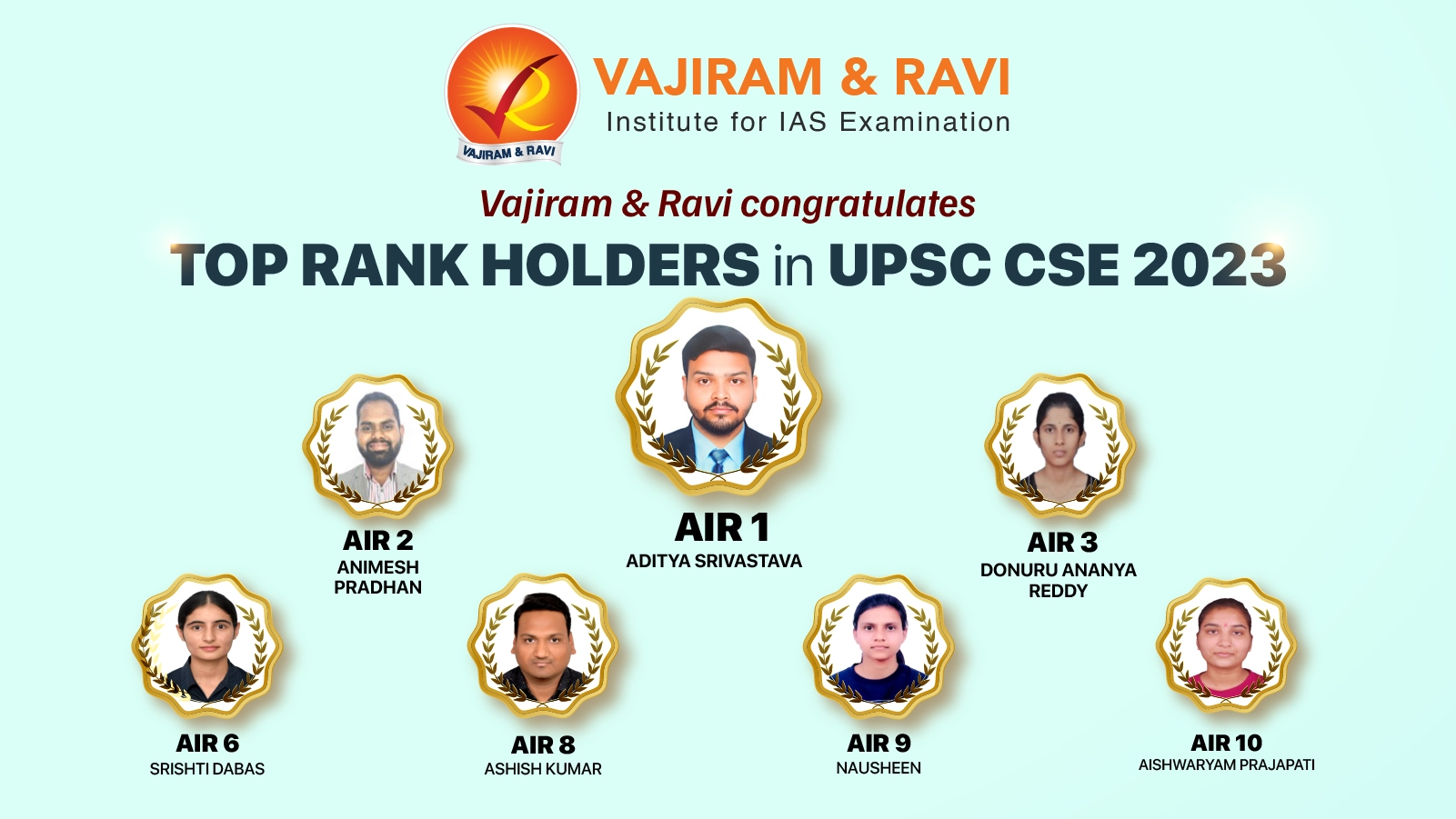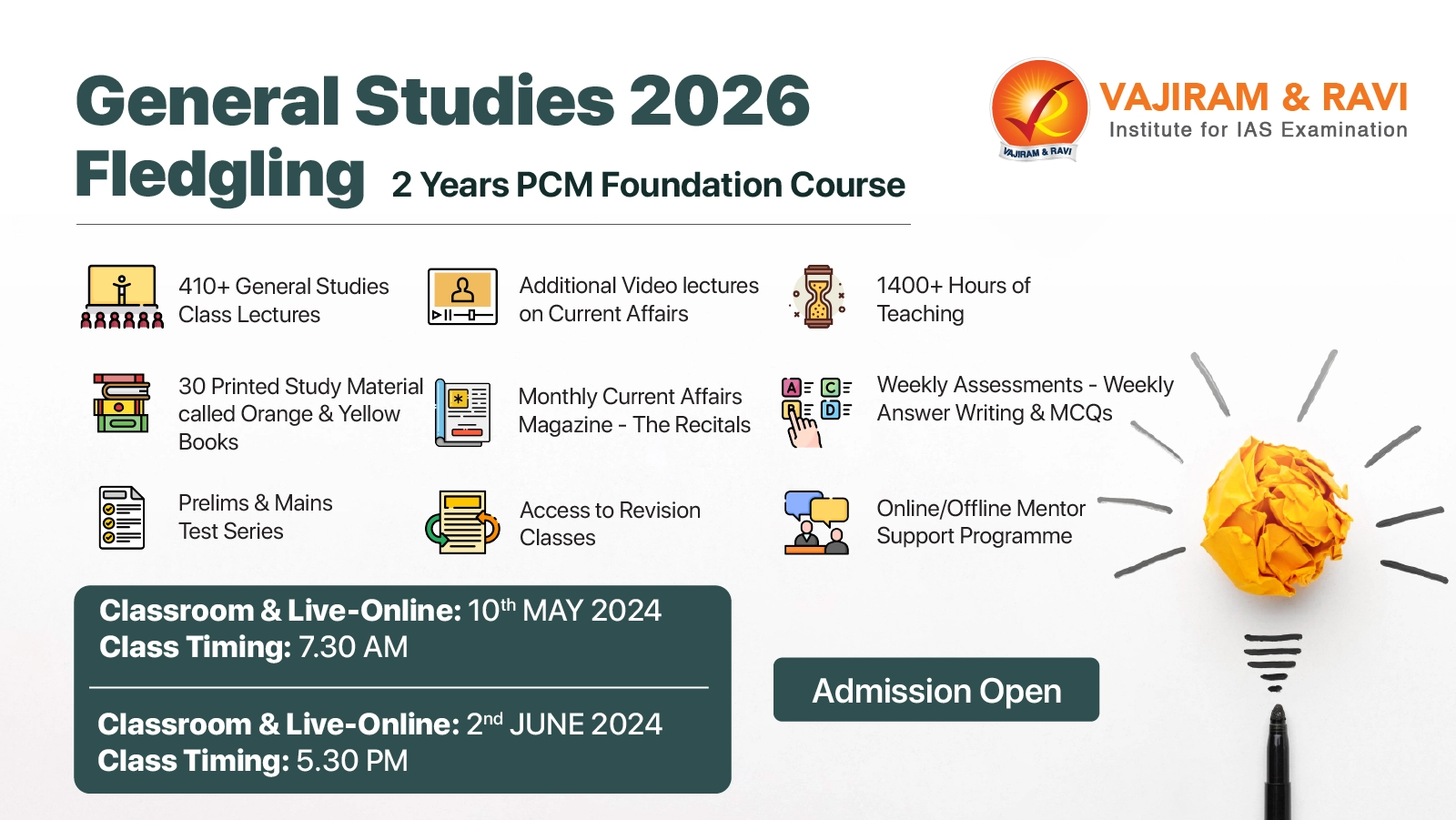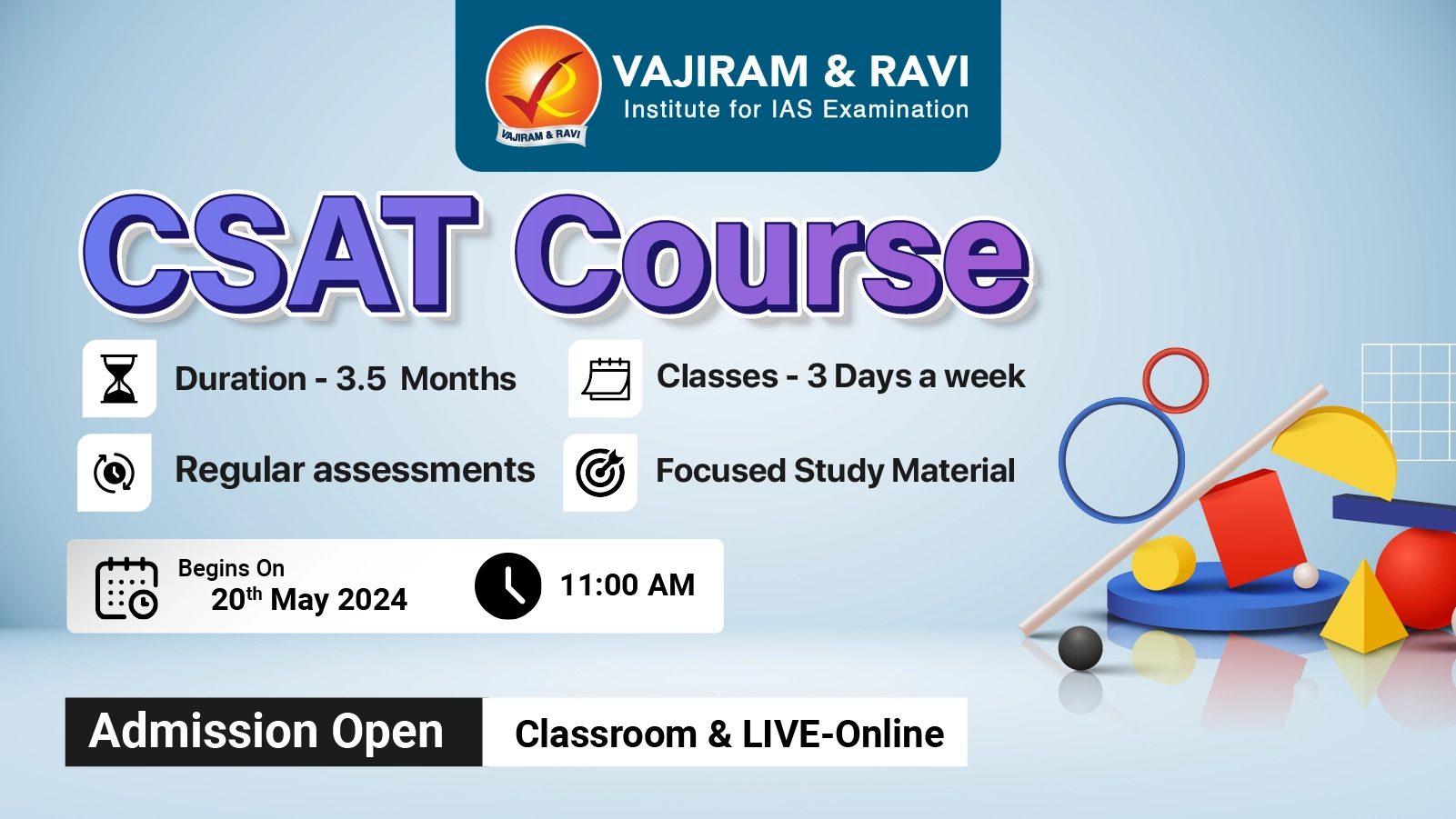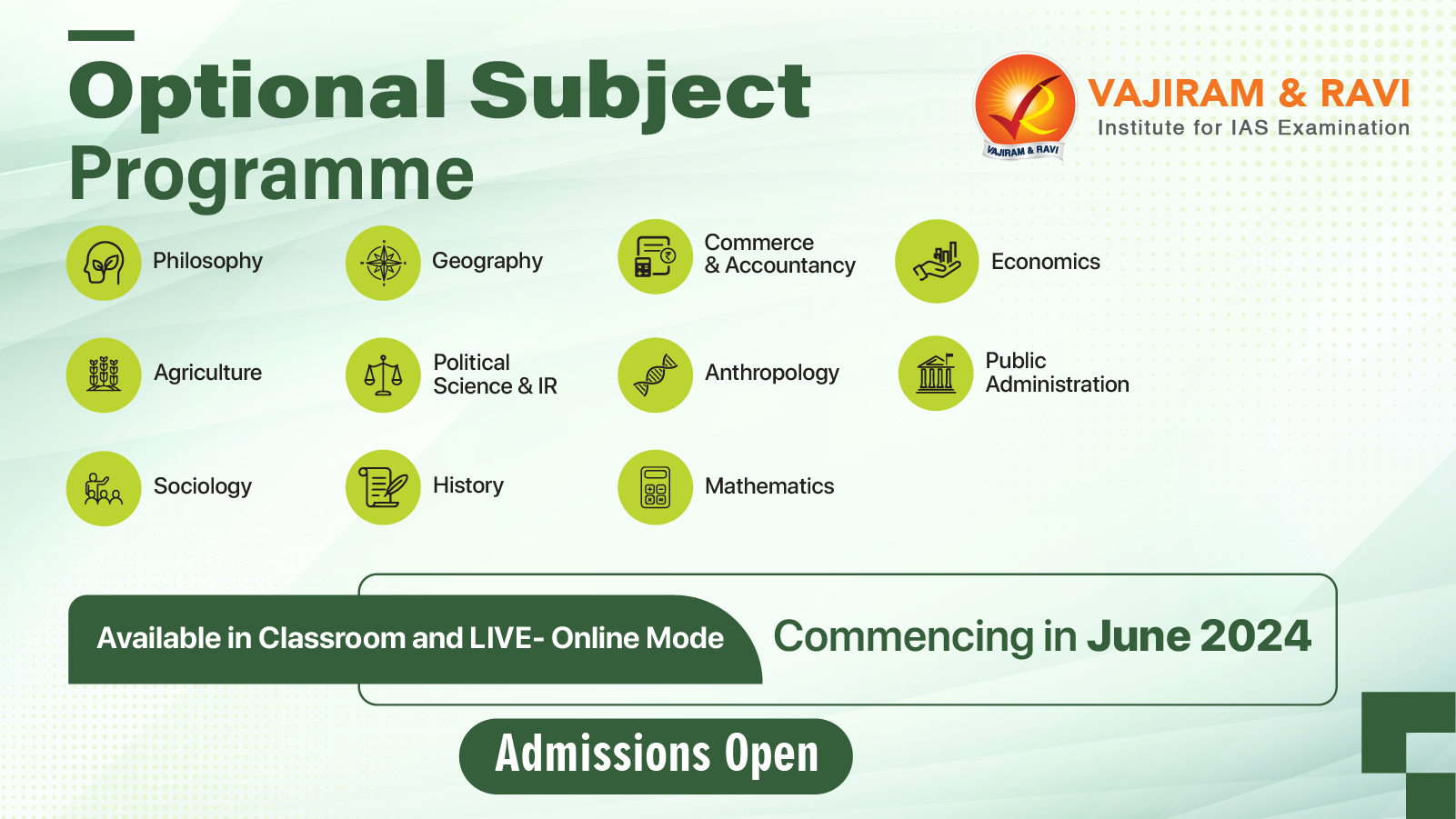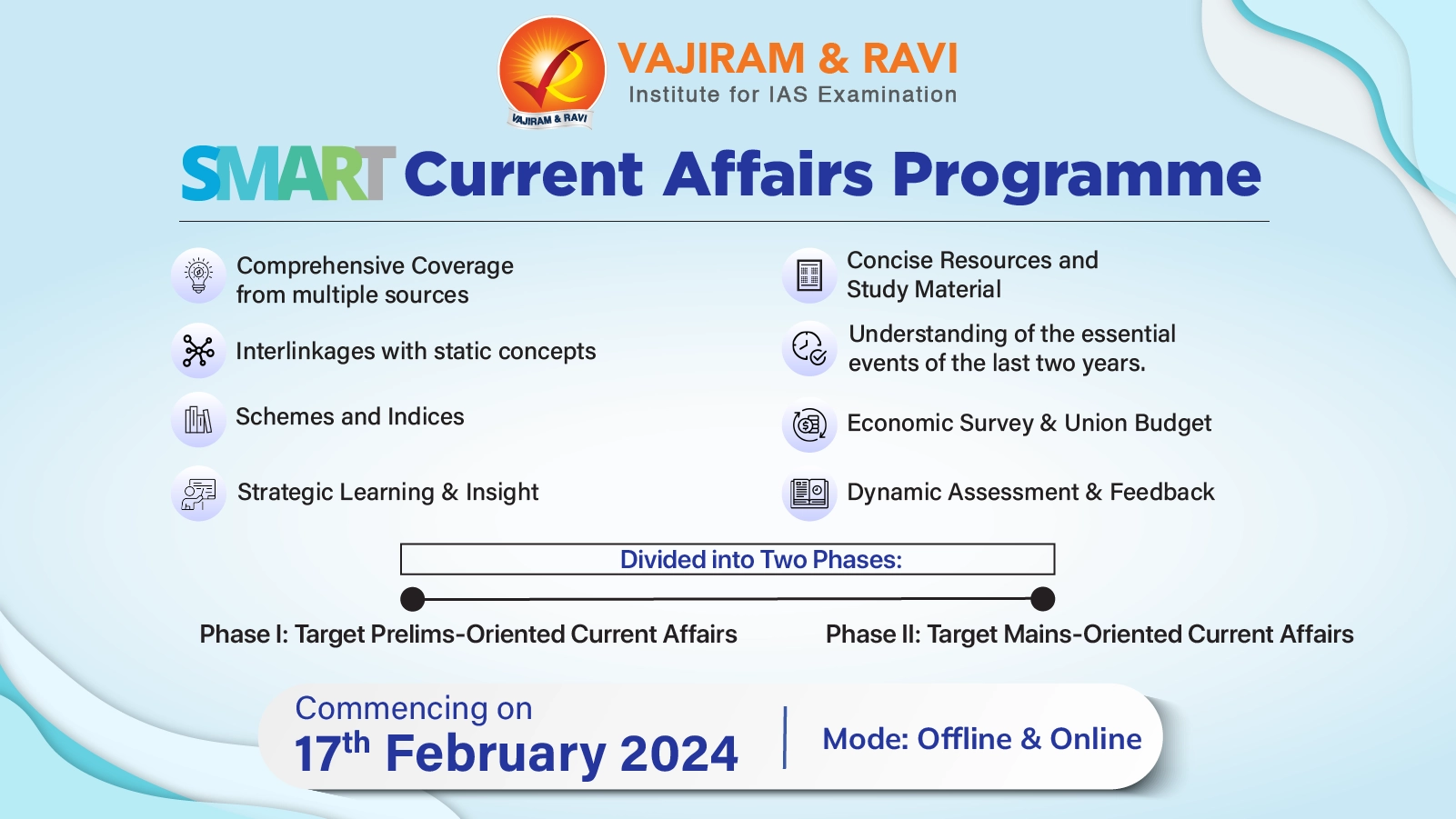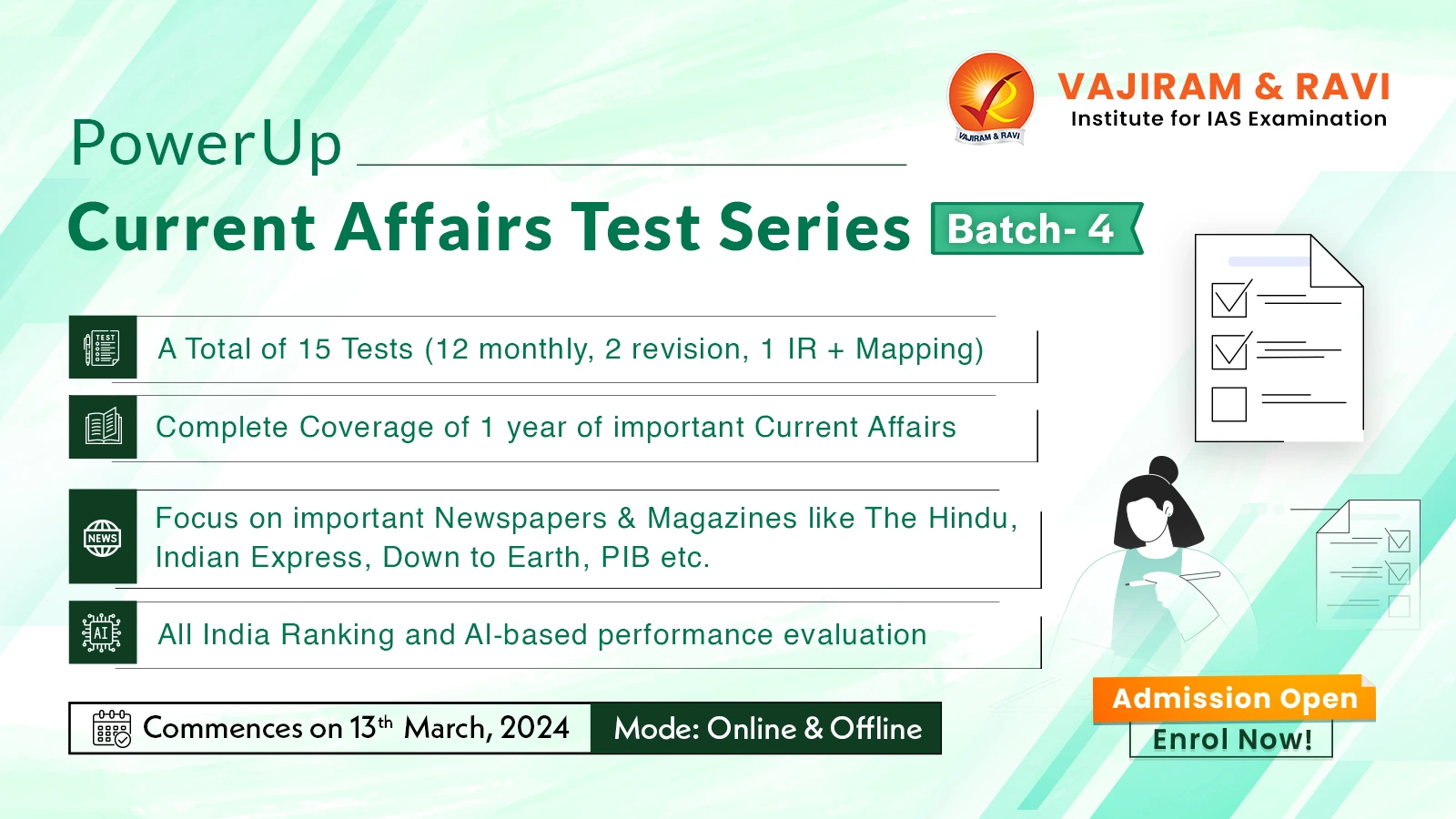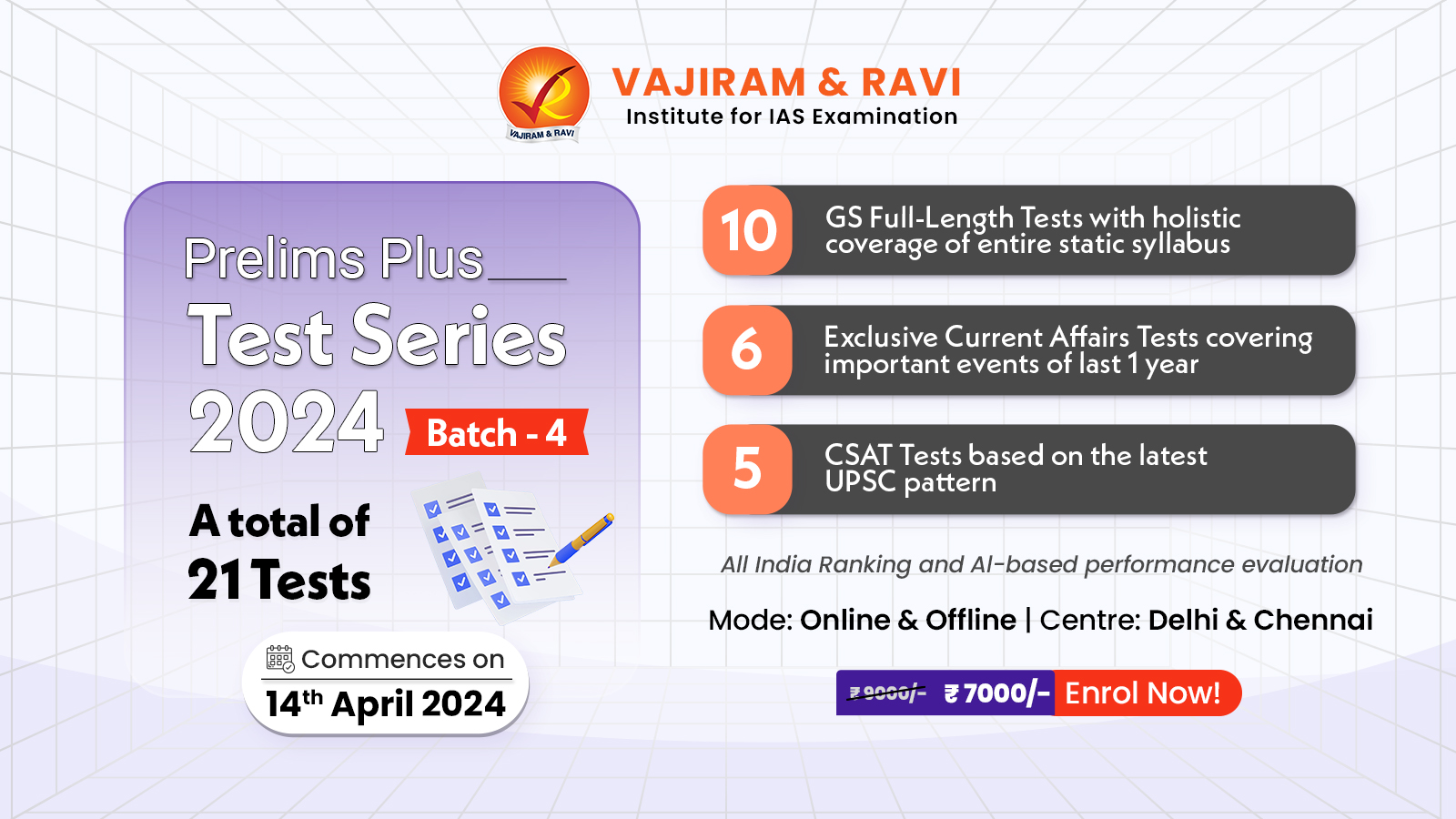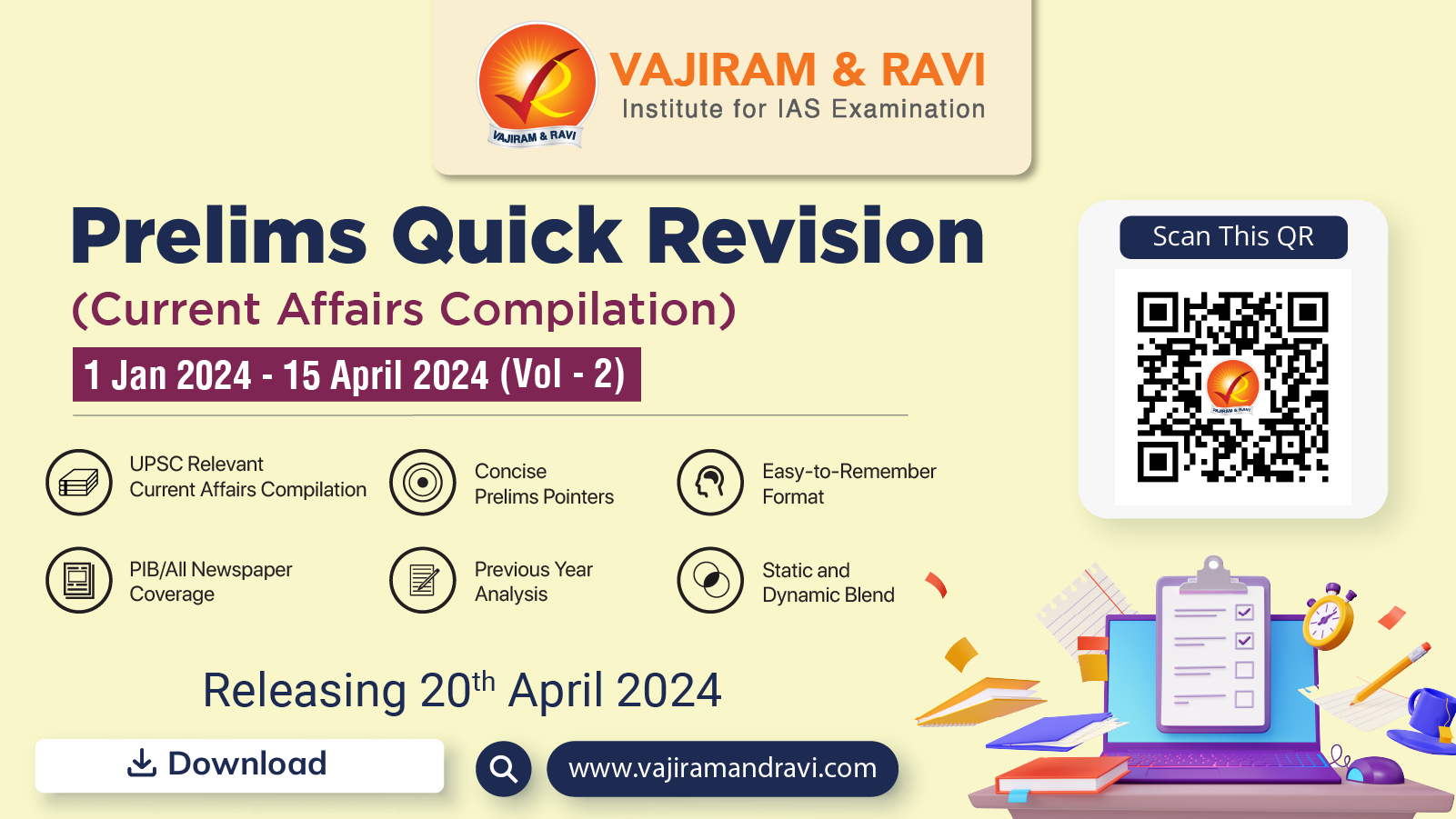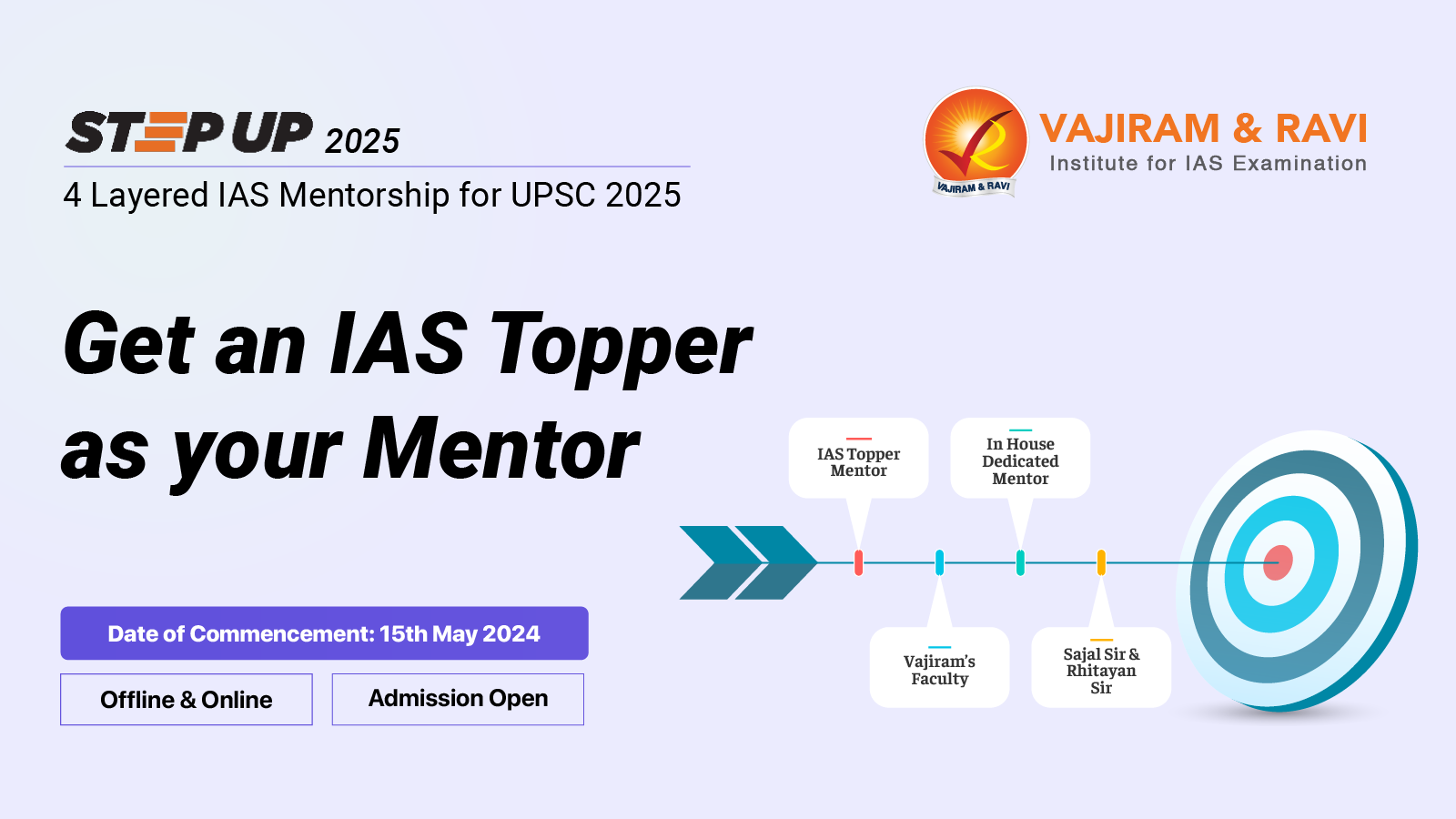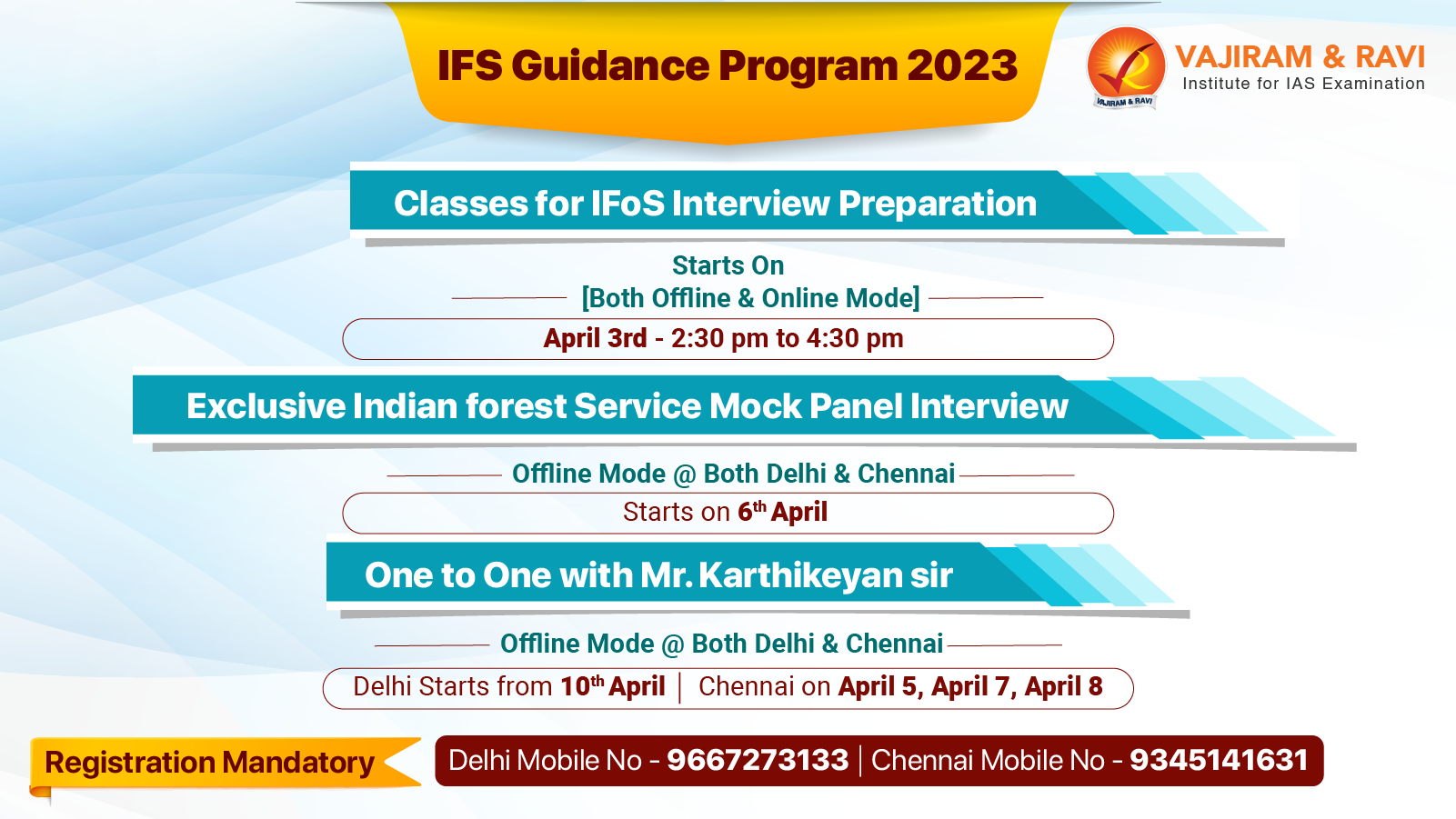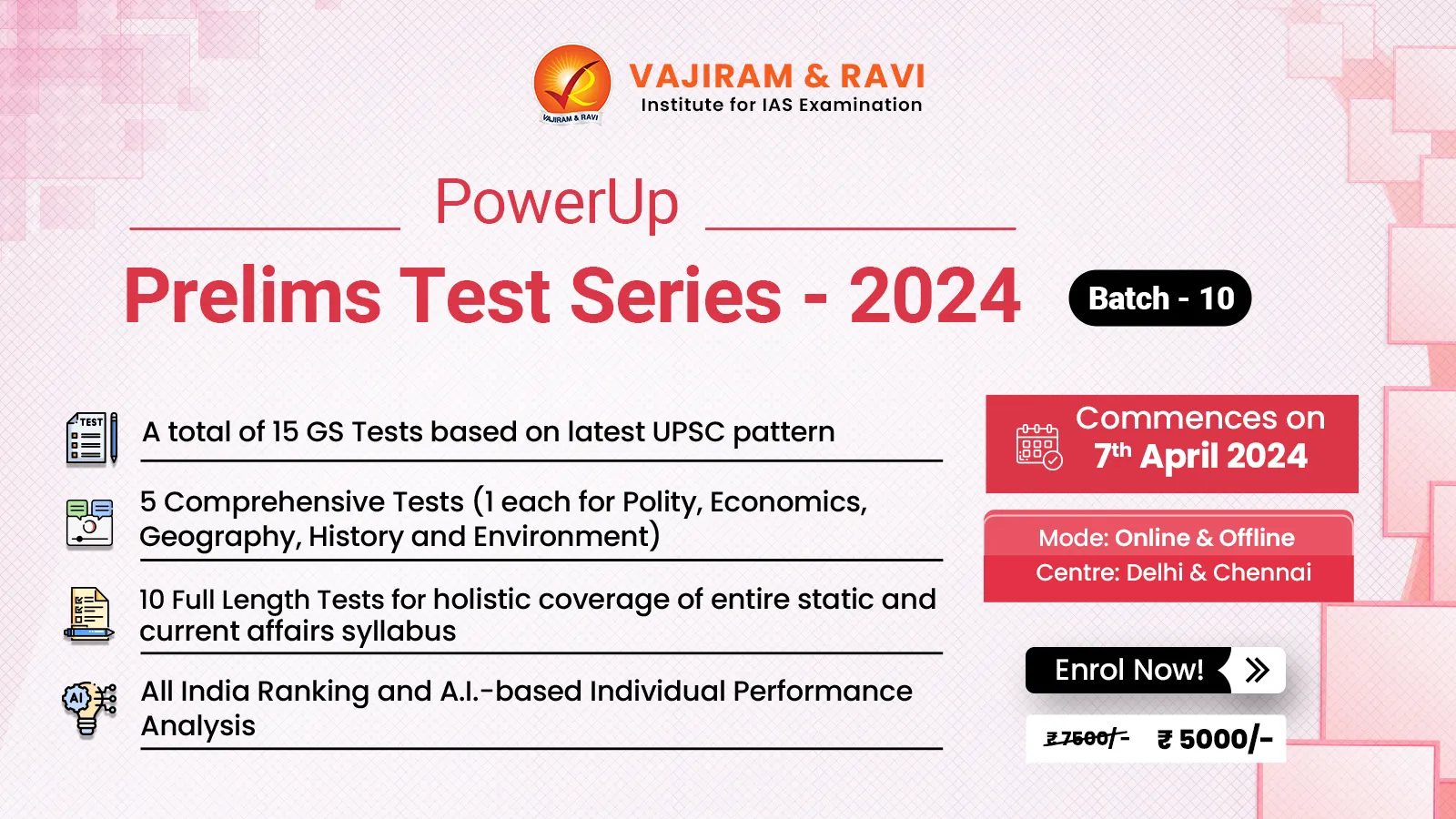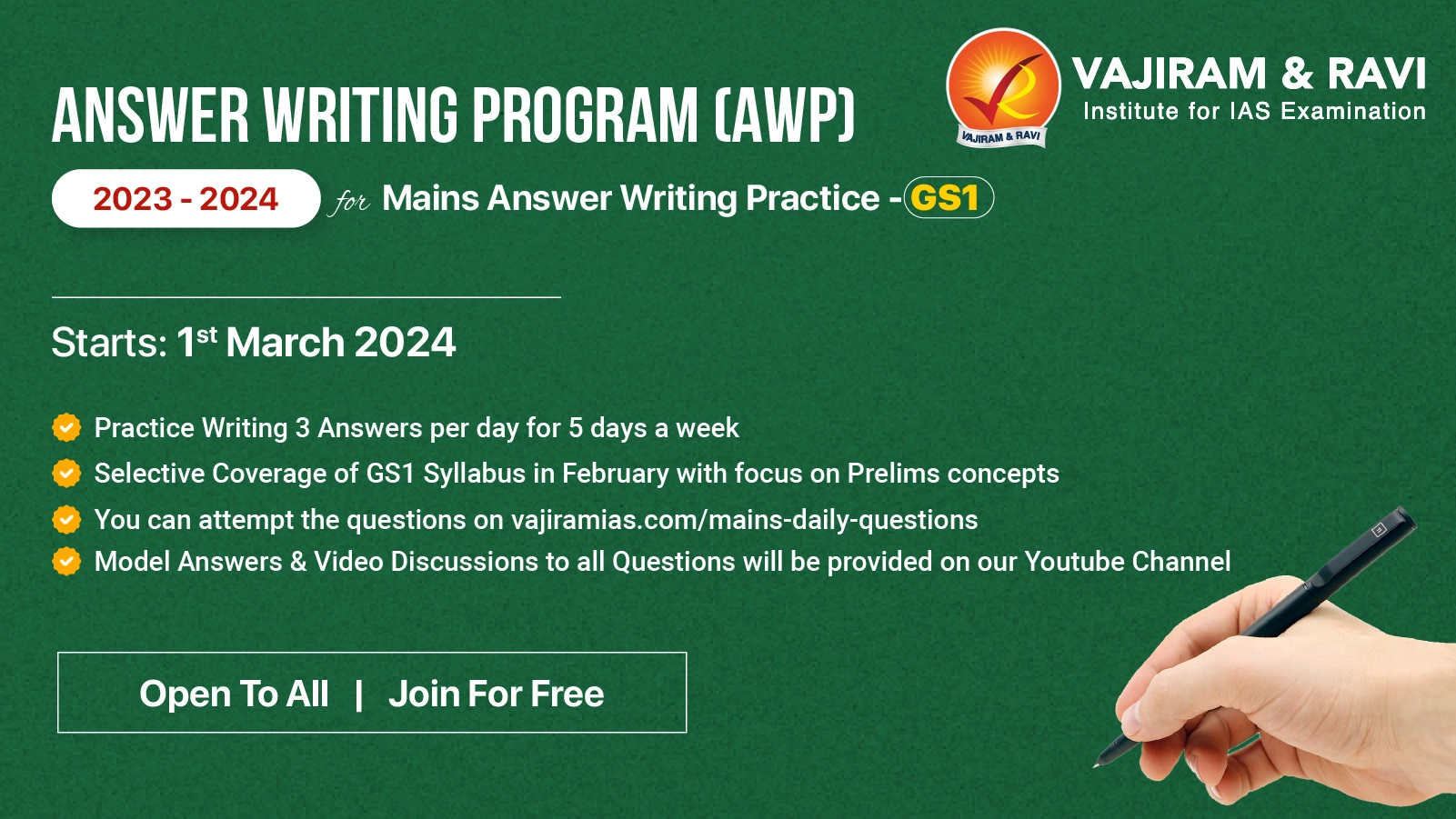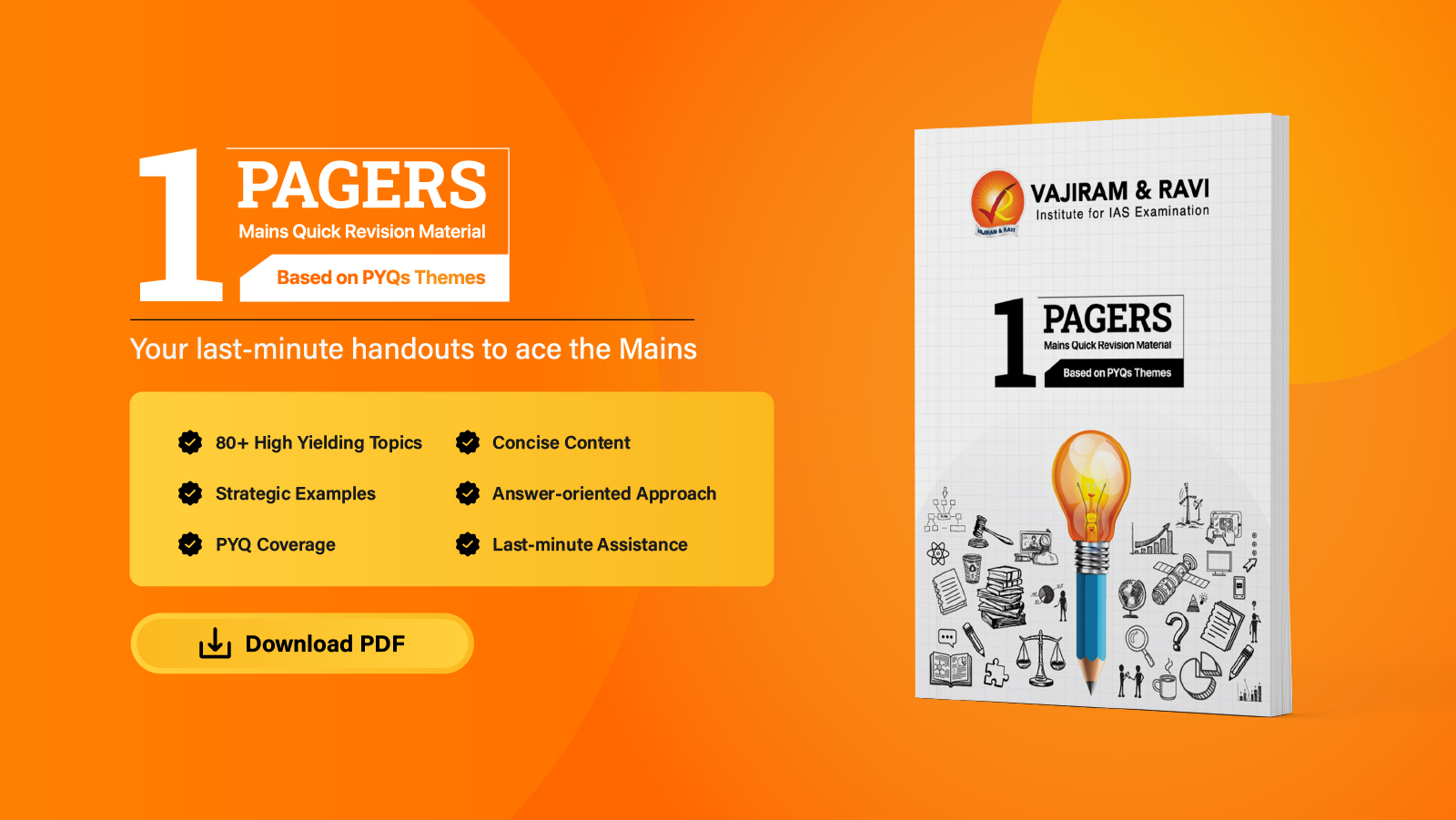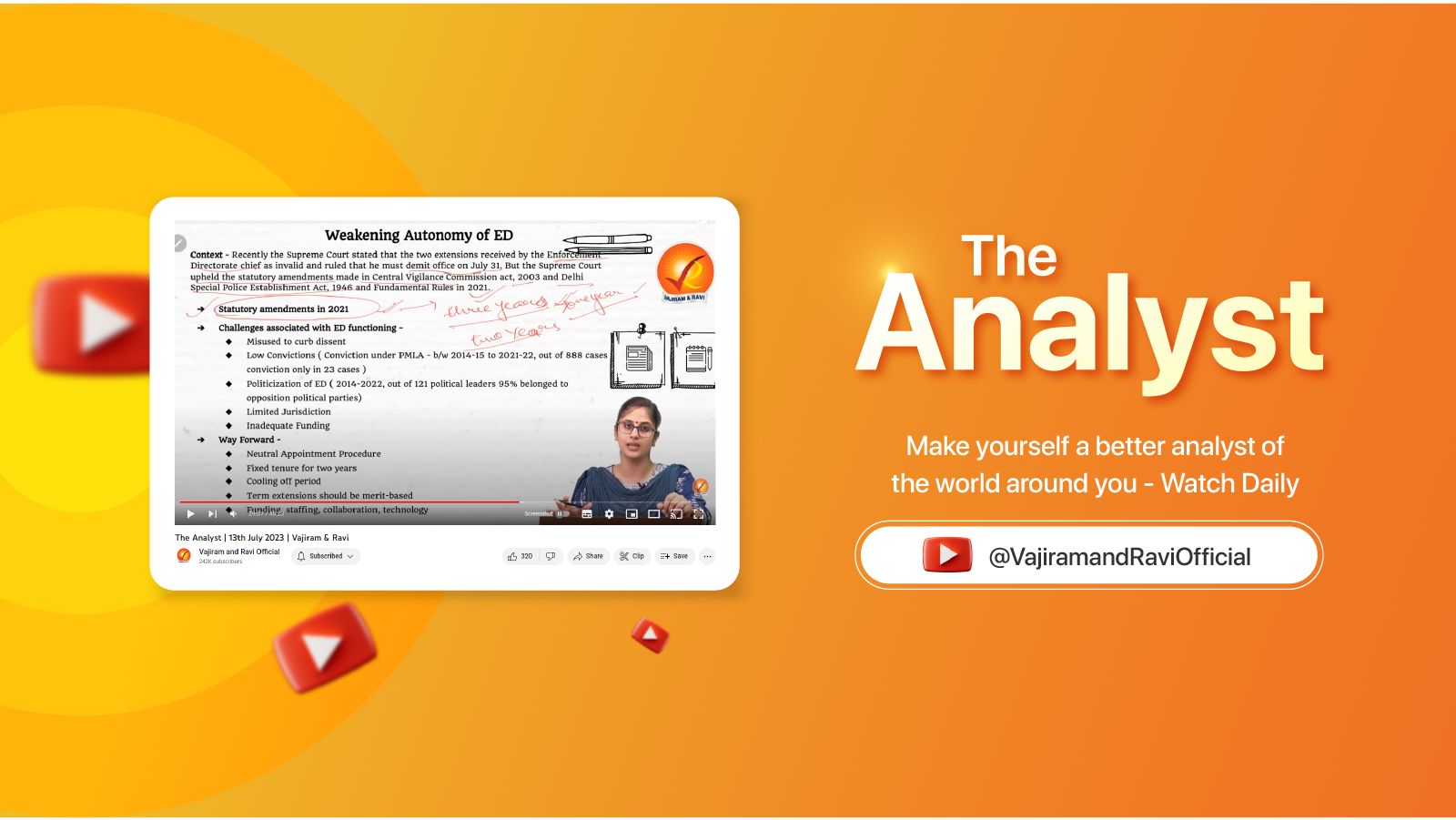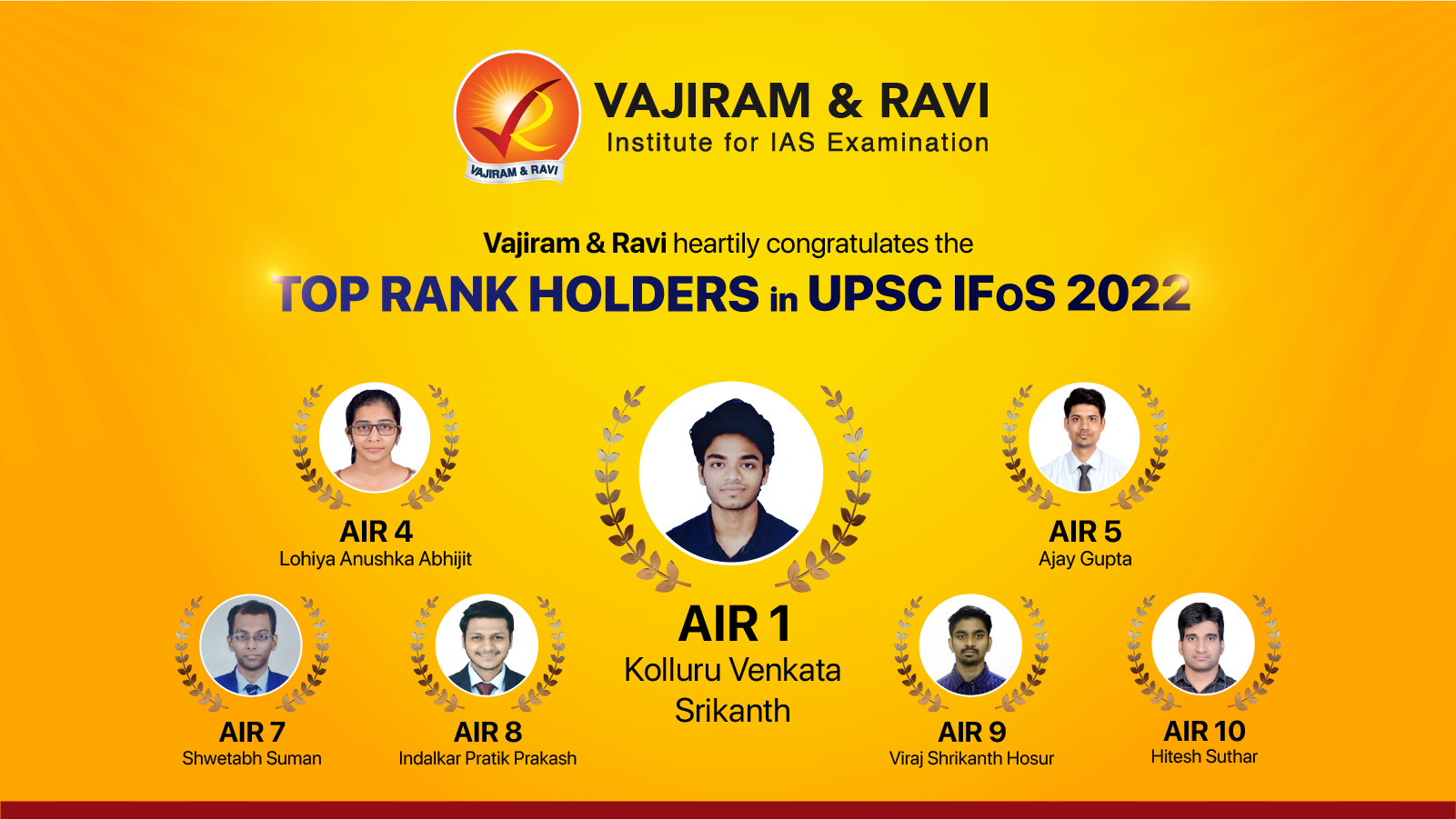Upcoming Mentoring Sessions
Prelims 2024 Strategy Session
RMS - Ancient History - Mauryan and Post-Mauryan Age
RMS - Polity - Parliament 1
RMS - Geography - Major Landforms
RMS - Polity - Judiciary - 2
RMS - Economics - Money and Banking - 2
Mentoring Session (2024-25) - How to Make Notes?
RMS - Polity - Judiciary 1
General Mentoring Session
RMS - Modern History - Constitutional Developments - Important Acts in British India
RMS - Ancient History - Buddhism and Jainism
RMS - Economics - Human Resource and HRD
RMS - History - Ancient India - Mahajanpadas
RMS - Economics - Balance of Payment and Foreign Trade
Mentoring Session (2024-25) – How to Read and Analyse Newspaper?
Mentoring Session (2024-25) - How to write an Answer?
RMS - Economics - Money and Banking-I
Online Test
26 Apr 2024

Full Length Test 03 (R5532)
Questions : 100 Questions
Time Limit : 0 Mins
Expiry Date : June 30, 2024, midnight
Online Test
26 Apr 2024

Full Length Test 03 (R5532)
Questions : 100 Questions
Time Limit : 0 Mins
Expiry Date : June 30, 2024, midnight
Article
26 Apr 2024
Why in news?
Recently, a study of the Indian Ocean floor or the bathymetry was undertaken by scientists of the Indian National Centre for Ocean Information Services (INCOIS).
The study – ‘Impact of bathymetry on Indian Ocean circulation in a nested regional ocean model’ highlights the importance of bathymetry in ocean models to understand ocean movements better. This understanding is crucial for improving forecasts related to ocean conditions, weather, and climate, especially for Indian ocean rim countries and subcontinent.
What’s in today’s article?
- Bathymetry
- Indian National Centre for Ocean Information Services (INCOIS)
- Key highlights of the study
Bathymetry
- It is the study and mapping of the depth of water in oceans, rivers, lakes, and streams.
- Bathymetric maps are similar to topographic maps, which use lines to show the shape and elevation of land features. On bathymetric maps, the lines connect points of equal depth.
- Bathymetry is the foundation of the science of hydrography, which measures the physical features of a water body.
- Hydrography includes not only bathymetry, but also the shape and features of the shoreline; the characteristics of tides, currents, and waves; and the physical and chemical properties of the water itself.
Indian National Centre for Ocean Information Services (INCOIS)
- INCOIS is an autonomous organization of the Government of India.
- It provides ocean information and advisory services to the scientific community, industry, government agencies, and society.
- INCOIS is a unit of the Earth System Science Organization (ESSO) and was established in 1999 under the Ministry of Earth Sciences (MoES).
- It is located in Hyderabad.
Key highlights of the study
- The Contrasting Currents of the Indian Ocean
- The Indian Ocean's currents are not solely governed by surface influences.
- The study suggests that both the Andaman and Nicobar Islands and the Maldives islands play pivotal roles in altering the direction and speed of these currents, particularly in the deep ocean.
- Interestingly, these submerged dynamics often contradict the movements observed at the ocean's surface, revealing a complex interplay between various oceanic forces.
- Revolutionizing Ocean Modeling: Correcting Coastal Currents Around India
- The study revealed significant discrepancies in previously employed ocean modeling systems, particularly in their representation of coastal currents around India.
- Through comprehensive bathymetry studies, notable enhancements have been achieved in accurately depicting upper ocean characteristics including salinity, temperature, and currents, particularly in coastal regions.
- A more realistic East India Coastal Current (EICC) flow was estimated at 1,000 metres and 2,000 metres depth, which is opposite to that of the surface.
- Insights from Andaman, Nicobar, and Maldives
- The study uncovered a significant boundary current tracing the coast of the Andaman and Nicobar Islands at a depth of 2,000 meters, shedding light on previously unrecognized deep-sea dynamics.
- Moreover, the presence of the Maldives Islands emerges as a key factor in extending the Equatorial Under Current (EUC)
- EUC is a strong, narrow, eastward-flowing current that's located in the upper thermocline, centered on the equator.
- It's a permanent feature of the Atlantic and Pacific oceans, and is also present in the Indian Ocean during the northeast monsoon in the spring and winter.
- Notably, seasonal variations in the EUC's characteristics have been identified, with a more defined structure observed during the fall months in the eastern Equatorial Indian Ocean, at depths ranging from 50 to 100 meters.
- However, in spring, it's a bit deeper, around 100 to 150 meters.
- The Crucial Role of Ocean Forecasting in Weather, Climate, and Industry
- Oceans significantly influence weather, climate, and the maritime sector.
- This highlights the need for precise forecasts of oceanographic parameters like currents, temperature, and salinity across various time frames.
- Achieving accurate predictions relies on bolstered observations and refined modeling techniques, essential for supporting both economic activities and scientific understanding.
Article
26 Apr 2024
Why in News? RBI recently barred Kotak Mahindra Bank from onboarding new customers through online and mobile banking channels, and from issuing fresh credit cards, with immediate effect.
What Powers did RBI use? Section 35A of the Banking Regulation Act, 1949 empowers the RBI “to prevent the affairs of any banking company being conducted in a manner detrimental to depositors interests or prejudicial to banks interests”.
Reasons for the Ban-As per RBI’s Information Technology (IT) examination of the bank for the years 2022 and 2023-
- Serious deficiencies and non-compliances were observed in the areas of IT inventory management, patch and change management, user access management, vendor risk management, data security and data leak prevention strategy, business continuity, disaster recovery rigour and drill.
- Frequent and subsequent outages in banks core Banking System (CBS) and online and digital banking were observed due to absence of a robust IT infrastructure and risk management framework.
- There was increasing load on Bank’s IT systems due to rapid growth in the volume of bank’s digital transactions, including credit card transactions.
- The bank failed to comply with Corrective Action Plans issued by RBI.
What next for Existing Customers? The RBI clarified that the bank will continue to provide services to its existing customers, including its credit card customers.
Bank’s Response- The Bank said that it has taken measures for adoption of new technologies to strengthen its IT systems and will continue to work with RBI to swiftly resolve balance issues at the earliest. It assured of providing the existing customers uninterrupted services, including credit card, mobile and net banking and of providing all services except credit card to new customers.
Article
25 Apr 2024
Why in News? US senate has passed a bill that could ban Tik-tok. The proposed law would allow TikTok to continue to operate in the US only if Bytedance sells it within nine months as the government is afraid that Chinese government can force domestic companies like Bytedance to share sensitive personal data of over 170million American users, or be abused to spread pro-Chinese propaganda.
Response to Bill: Many in the US see this move as an attack on free speech of 170 million Americans. As per Tiktok, this move could devastate seven million businesses, and shutter a platform that contributes $24 billion to US economy, annually. It is also being seen as a foreign policy tool under which Chinese tech companies are being targeted.
What Could Be the Consequences? There could be legal challenges, Beijing can also make retaliatory moves if the Bill were to become law. Earlier when Huawei was banned, Beijing introduced new guidelines aimed at blocking Intel and AMD chips in government PCs and servers.
Is This the First Attempt at Banning TikTok? No, under former President Trump, Bytedance was forced into selling TikTok’s American operations to an American company. Many companies had shown interest including Oracle and Microsoft.
Repercussions of Tech Bans- Such tech sanctions could be a double edged sword. They might slow down the progress of a country by having no access to cutting edge tools available across the world and such sanctions may also force them to develop their own technology which could reduce dependence on foreign companies and boost domestic tech. For example, Huawei had to develop its own smartphone operating system and chip after being banned from accessing US-made components and technology, including Android.
Article
25 Apr 2024
Why in News? A few days after Meta unveiled its Llama 3 Large Language Model (LLM), Microsoft unveiled the latest version of its ‘lightweight’ AI model- Phi-3-Mini.
What are Language Models? Language models are the backbone of AI applications like ChatGPT, Claude, Gemini, etc. These models are trained on existing data to solve common language problems such as text classification, answering questions, text generation, document summarisation, etc.
What is Phi-3-Mini? Microsoft has described the Phi-3 as a family of open AI models that are the most capable and cost-effective small language models (SLMs) available. Phi-3-Mini is believed to be first among the three small models that Microsoft is planning to release. It has reportedly outperformed models of the same size in areas like language, reasoning, coding, and maths.
What’s New in Microsoft’s Phi-3-Mini? Phi-3-mini (a 3.8B language model) is the first model in its class to support a context window of up to 128K tokens, with little impact on quality. The amount of conversation that an AI can read and write at any given time is called the context window, and is measured in tokens.
How is Phi-3-Mini Different from LLMs? Phi-3-mini is an SLM. Simply, SLMs are more streamlined versions of LLMs. The ‘Large’ in LLMs has two meanings - the enormous size of training data and the parameter count (memories and knowledge that a machine has learned during its model training). When compared to LLMs, smaller AI models are cost-effective to develop and operate and they perform better on smaller devices like laptops and smartphones. SLMs are great for resource-constrained environments including on-device and offline inference scenarios.
Article
25 Apr 2024
Why in News? The US has confirmed providing long-range Army Tactical Missile Systems (ATACMS) to Ukraine to aid its war effort against Russia, soon after the US Congress passed a Bill that apportioned $61 billion worth of funding for Ukraine.
What is ATACMS? The ATACMS is one of the most potent missile systems built by US-based arms manufacturer Lockheed Martin. This is a surface-to-surface artillery weapon system. Its biggest strengths are the long-range of attack, ability to fire cluster munitions, and the weapon system’s mobility. The missiles were part of a $300 million military aid package for Ukraine.
What is the Range of ATACMS? There is a mid-range version of the ATACMS, called Block 1, and there is a long-range version, Block 1A. ATACMS Block 1 has a range of 165 km and Ukraine was provided these systems last year. ATACMS Block 1A, on the other hand, has a maximum range of 300 km which is capable of striking targets well beyond the range of existing Army cannons, rockets and other missiles.
Can Ukraine Target Russian Territories with ATACMS? Despite territories deep inside Russia now being within the range of the ATACMS, Ukraine cannot use it to hit targets in these locations. Ukraine has committed to only use the weapons inside Ukraine, not in Russia. The US administration has made it clear that the weapons cannot be used to hit targets inside Russia. The Biden administration is concerned that if Ukraine strikes deep into Russian territory, it would anger Moscow and escalate the conflict.
Current Affairs
April 25, 2024
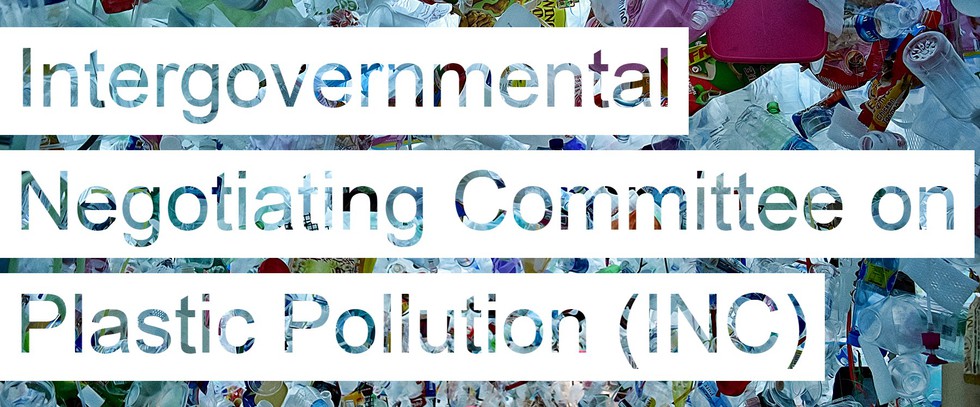
About Intergovernmental Negotiating Committee on Plastic Pollution:
- In 2022, at the fifth session of the UN Environment Assembly, a historic resolution was adopted to develop an International Legally Binding Instrument (ILBI) on plastic pollution, including in the marine environment.
- The resolution requested the Executive Director of the UN Environment Programme (UNEP) to convene an Intergovernmental Negotiating Committee (INC) to develop "the instrument," which is to be based on a comprehensive approach that addresses the full life cycle of plastic, including its production, design, and disposal.
- The objective of the global plastics treaty is to set a global framework of standards around accountability, responsibilities, financing, material/chemical standards, import/export restrictions, targets.
- An INC meets five times to develop the specific content of the new ILBI by the end of 2024. The first session of the INC (INC-1) took place in Punta del Este, Uruguay, from 28 November to 2 December 2022, followed by a second session (INC-2) from 29 May to 2 June 2023 in Paris, France, and a third session (INC-3) from 13 to 19 November 2023 in Nairobi, Kenya.
- INC-5, scheduled for 25 November to 1 December 2024 in Busan, Republic of Korea, is intended as the end of the INC process.
Current Affairs
April 25, 2024
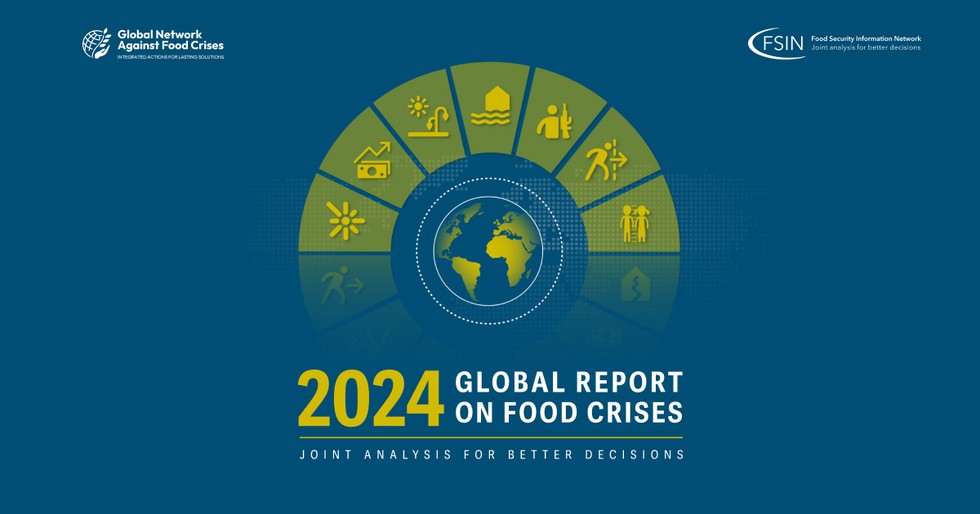
About Global Report on Food Crises (GRFC) 2024:
- It is released annually by the Food Security Information Network(FSIN) and launched by the Global Network Against Food Crises, a multistakeholder initiative that includes United Nations agencies, the European Union, the United States Agency for International Development and non-governmental agencies working to tackle food crises.
- Highlights of GRFC 2024:
- It analyzed a population of 1.3 billion in 2023 across 59 countries. Nearly 282 million people faced high levels of acute food insecurity.
- 2023 was the fifth consecutive year of rise in the number of people suffering acute food insecurity, defined as when populations face food deprivation that threatens lives or livelihoods, regardless of the causes or length of time.
- It identifies conflicts, extreme weather events and economic shocks as the three main drivers behind the exacerbation of food crises in the world.
- With food crisis escalating alarmingly in conflict hotspots in 2023, notably Palestine (Gaza Strip) and Sudan, conflict / insecurity became the primary driver in 20 countries, directly affecting 135 million people.
- The Gaza Strip became the area with the most severe food crisis in the last eight years of GRFC reporting.
- Sudan is facing one of the worst food crises in the world, with almost a third of the population in need of emergency food aid.
- Meanwhile, weather extremes were the main driver for 18 countries, with over 72 million people facing high levels of acute food insecurity because of such extreme weather events.
- The 10 countries with the world’s largest food crisis in 2023 were the Democratic Republic of the Congo, Nigeria, Sudan, Afghanistan, Ethiopia, Yemen, the Syrian Arab Republic, Bangladesh, Pakistan and Myanmar.
- On a positive note, the situation improved in 17 countries in 2023, including the Democratic Republic of Congo and Ukraine.
Current Affairs
April 25, 2024
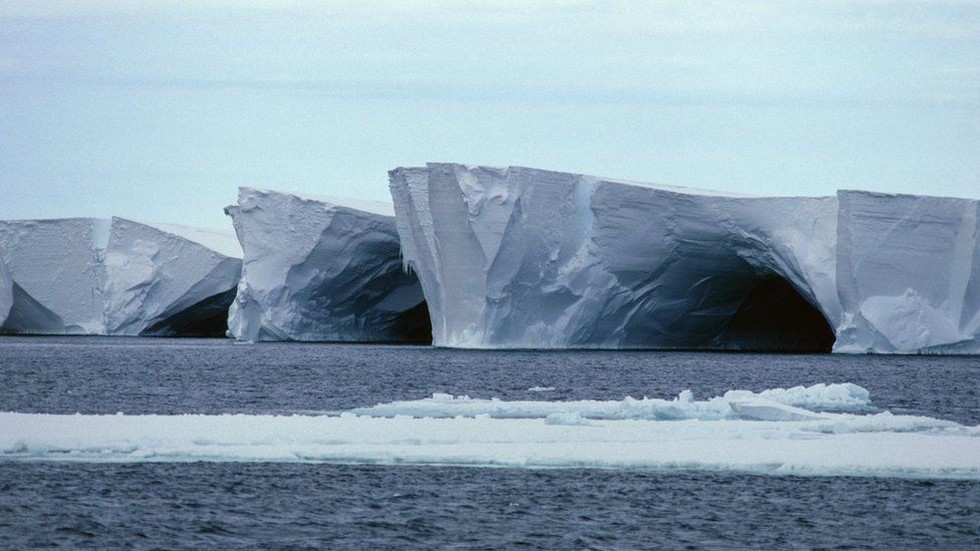
About Ross Ice Shelf:
- It is the largest ice shelf of Antarctica. It is situated in the Ross Sea, extending off the continent’s coast into the ocean.
- It is the world’s largest floating body of ice, covering approximately 487,000 square kilometres, about the size of France.
- Only ten percent of the ice shelf is visible, with the majority hidden in several hundred metres of ice below the surface.
- Its thickness varies significantly, ranging from about 100 meters to several hundred meters. The thickest parts are generally found where the shelf anchors against the continent.
- Formation:
- It is formed by the accumulation and compaction of snow, which, over time, turns into ice.
- It is being fed a constant flow of ice from glaciers draining from both the East and West Antarctic Ice Sheets.
- As new ice is added, existing ice is being removed through melting at the base and ice calving at the front.
- It plays an important role in stabilising the Antarctic ice sheet, buttressing the ice that is constantly moving over the land surface.
Key Facts about Ross Sea:
- It is a giant bay just 320 kms from the South Pole. The sea is remote and positioned south and slightly east of New Zealand. It is the largest polar marine ecosystem in the world. It is relatively shallow.
- It is strongly influenced by the coastal East-Wind Drift that sets up a vast clockwise gyre accompanied by deepwater upwelling.
- It is the first protected area in Antarctica and home to most of the world’s penguins and many species of whale. Numerous scientific research stations are located along its coasts.

